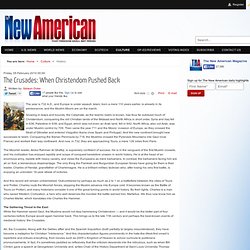

The Holy Sepulchre Virtual Tour - Jerusalem www.360tr.com. In the Beginning: Bibles Before the Year 1000. End of days. Constantinian shift. Battle of the Milvian Bridge, Raphael, Vatican Rooms.

The artist depicted the troops of Constantine bearing the labarum. Constantinian shift is a term used by Anabaptist and Post-Christendom theologians to describe the political and theological aspects of the 4th-century process of Constantine's legalization of Christianity.[1] The term was popularized by the Mennonite theologian John H. Yoder.[2] Historical context[edit] In 313 the Edict of Milan legalised Christianity alongside other religions allowed in the Roman Empire. Towards the end of the century, Bishop Ambrose of Milan made the powerful Emperor Theodosius I (reigned 379–95) do penance for several months after the massacre of Thessalonica (390) before admitting him again to the Eucharist. Theological implications[edit] Critics point to this shift as the beginning of the phenomenon known as Caesaropapism. See also[edit] References[edit] Jump up ^ Clapp, Rodney (1996).
Further reading[edit] Great Apostasy. Antichristus, a woodcut by Lucas Cranach of the pope using the temporal power to grant authority to a generously contributing ruler The Great Apostasy is a term used by some religious groups to describe a perceived fallen state of traditional Christianity, especially the Roman Catholic Church, because they claim it allowed the traditional Greco-Roman mysteries and deities of solar monism such as Mithras and Sol Invictus and idol worship into the church.

In short, in their opinion, the church has fallen into apostasy.[1][2] They feel that to attract the pagans to nominal Christianity, the Catholic Church took measures to amalgamate the Christian and pagan festivals [3] so pagans would join the church; for example, bringing in the pagan festival of Easter as a substitute for the Pasch or Passover, although neither Jesus nor his Apostles enjoined the keeping of this or any other festival.[4][5] Overview[edit] Some modern scholars[who?] Protestant views[edit] Reformed perspective[edit] The Crusades: When Christendom Pushed Back. Growing in leaps and bounds, the Caliphate, as the Islamic realm is known, has thus far subdued much of Christendom, conquering the old Christian lands of the Mideast and North Africa in short order.

Syria and Iraq fell in 636; Palestine in 638; and Egypt, which was not even an Arab land, fell in 642. North Africa, also not Arab, was under Muslim control by 709. Renaissance. The Renaissance (UK /rɨˈneɪsəns/, US /ˈrɛnɨsɑːns/, French pronunciation: [ʁənɛsɑ̃s], from French: Renaissance "re-birth", Italian: Rinascimento, from rinascere "to be reborn")[1] was a cultural movement that spanned the period roughly from the 14th to the 17th century, beginning in Italy in the Late Middle Ages and later spreading to the rest of Europe.

Though availability of paper and the invention of metal movable type sped the dissemination of ideas from the later 15th century, the changes of the Renaissance were not uniformly experienced across Europe. In politics, the Renaissance contributed the development of the conventions of diplomacy, and in science an increased reliance on observation. Historians often argue this intellectual transformation was a bridge between the Middle Ages and Modern history. Overview The Renaissance was a cultural movement that profoundly affected European intellectual life in the early modern period. Origins Latin and Greek phases of Renaissance humanism. Protestant Reformation. Calvinism Vs. Arminianism. Which view is correct? Neither! A Masonic Dictionary…to help Masons and Non-Masons.
A Masonic Dictionary…to help Masons and Non-Masons The Latin accipere, receive, was from ad, meaning "to," and capere, meaning "take," therefore to take, to receive.

The passive apprenticeship and initiation, but after the participle of this was acceptus. In Operative Masonry members were admitted through course of time, and when the Craft had begun to decay, gentlemen who had no intention of doing builders' work but were interested in the Craft for social, or perhaps for antiquarian reasons, were accepted" into membership; to distinguish these gentlemen Masons from the Operatives in the membership they were called the "Accepted. " After 1717, when the whole Craft was revolutionized into a Fraternity, all members became non-Operatives, hence our use of the word in such phrases as "Free and Accepted Masons.
" Filius is Latin for son, filia for daughter; the prefix "af" is a form of the Latin ad, meaning to add to. The Latin for weapons, or arms, was arma. (Also spelled "dimit. ") Download Page. Online Parallel Bible. SearchGodsWord.org, Bible study resources from HeartLight.org.